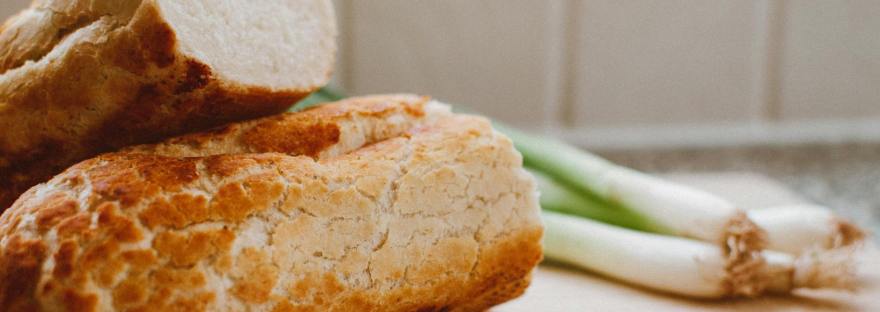
Breathe New Life: A Spring Cleaning Textile Refresh for the Homestead
Spring has sprung, and with it comes the irresistible urge to open windows, let the sunshine in, and refresh our homes. Here at Better Homes and Harvests, we know that for the environmentally conscious, slow-living enthusiast, spring cleaning isn’t just about tidying up; it’s about reconnecting with our spaces, caring for our belongings, and embracing the beauty of a simpler life. This year, let’s focus on bringing new life to our textiles – those comforting layers that make a house a home.

Imagine sinking into freshly laundered sheets, wrapping yourself in a soft, sun-warmed quilt, or gathering around a table adorned with a crisp, clean tablecloth. This feeling of renewal starts with a mindful approach to our textile care. So, let's roll up our sleeves and embark on a spring cleaning journey that's good for our homes, our hearts, and the planet.
Step 1: The Great Textile Declutter (Estimated Time: 2-4 Hours)
Before we even think about cleaning, we need to assess what we have. This is the decluttering stage, and it's crucial for a truly refreshing reset.
- Action: Gather all your textiles from every corner of your home. This includes bedding, towels, curtains, rugs, tablecloths, clothing (yes, even your closet needs a spring cleaning!), and even those forgotten fabric scraps in the craft room.
- Sort into three piles:
- Love and Use: These are the items you use regularly and adore.
- Repair and Revive: Items with minor damage (a loose seam, a small stain) that can be easily fixed.
- Release: Items that are beyond repair, no longer suit your style, or you simply don't use.
- Sustainable Thinking: This is where our slow-living values shine. Instead of automatically tossing items in the "Release" pile, consider these options:
- Donation: Gently used items can find a new home with local charities or shelters.
- Repurposing: Old t-shirts can become cleaning rags, ripped sheets can be used for gardening, and fabric scraps can be turned into quilts or other craft projects.
- Textile Recycling: Many communities now offer textile recycling programs. Check your local waste management website for options.
Step 2: Embrace Natural Cleaning Solutions (Estimated Time: Varies)
Ditch the harsh chemicals and embrace the power of natural cleaning! Not only are these solutions better for our health and the environment, but they’re often more effective and gentler on our precious textiles.
- Action: Gather your supplies. Here are a few essentials:
- White Vinegar: A natural disinfectant and deodorizer.
- Baking Soda: An excellent stain remover and deodorizer.
- Lemon Juice: A natural bleaching agent and stain remover.
- Essential Oils: Add a few drops of your favorite essential oil (lavender, tea tree, lemon) for a natural fragrance and added cleaning power.
- Homemade Laundry Detergent: There are many recipes online, but a simple one involves combining washing soda, borax, and grated castile soap.
- Stain Removal Recipes:
- General Stain Remover: Mix equal parts white vinegar and water in a spray bottle. Spray on the stain, let it sit for a few minutes, and blot with a clean cloth.
- Grease Stain Remover: Sprinkle baking soda on the stain, let it sit for 30 minutes, and then vacuum or brush it away.
- Brightening Whites: Add 1/2 cup of lemon juice to your washing machine when washing white linens.

Step 3: The Art of Hand Washing Delicates (Estimated Time: 1-2 Hours per Load)
Some textiles require a gentler touch than a machine can provide. Hand washing might seem daunting, but it's actually a mindful and rewarding way to care for delicate items.
- Action: Gather your supplies:
- Large Basin or Tub: Clean and free of any residue.
- Gentle Soap: A pH-neutral soap or a specialized detergent for delicates.
- Clean Towels: For blotting and drying.
- Washing Instructions:
- Fill the basin with lukewarm water.
- Add a small amount of soap and swirl to dissolve.
- Submerge the item and gently agitate the water with your hands. Avoid harsh scrubbing or twisting.
- Let the item soak for 15-30 minutes.
- Drain the soapy water and rinse the item thoroughly with cool water until all the soap is gone.
- Gently press out excess water. Do not wring!
- Lay the item flat on a clean towel and roll it up to absorb more water.
- Repeat with fresh towels until the item is no longer dripping.

Step 4: Embrace the Power of Air Drying (Estimated Time: Varies - Allow a Full Day)
Forget the dryer! Air drying is not only energy-efficient but also gentler on your textiles, helping them last longer.
- Action: Find a suitable drying space. Ideally, this should be outdoors on a clothesline, but a well-ventilated indoor space will also work.
- Drying Techniques:
- Clothesline: Hang items carefully, using clothespins to secure them. Avoid hanging delicate items in direct sunlight, as this can fade the colors.
- Drying Rack: Lay delicate items flat on a drying rack to prevent stretching.
- Padded Hangers: Use padded hangers for sweaters and other knitwear to maintain their shape.
- Patience is Key: Air drying takes time, so be patient. Allow the items to dry completely before storing them.
Step 5: Mindful Textile Storage (Estimated Time: 1-2 Hours)
Now that our textiles are clean and fresh, it's time to store them properly to protect them from dust, moths, and mildew.
- Action:
- Linen Closet Organization: Sort your linens by type and size. Fold them neatly and stack them on shelves or in baskets. Label your shelves or baskets for easy access.
- Cedar or Lavender Sachets: Place cedar blocks or lavender sachets in your linen closet to deter moths.
- Vacuum-Sealed Bags: For storing seasonal items, consider using vacuum-sealed bags to protect them from dust and moisture.
- Rotate Your Linens: Regularly rotate your linens to ensure even wear and tear.
- Repair over Replace: Before replacing any older fabric, take time to repair holes or tears as a step toward sustainability. Small mending sessions can keep your textiles from being discarded prematurely.
By implementing these strategies, you'll be able to effectively declutter and sustainably care for your textiles.
A Call to Action
Spring cleaning our textiles is an act of self-care, home care, and environmental stewardship. It's about slowing down, appreciating the simple things, and creating a space that reflects our values.
Now, we want to hear from you! What are your favorite spring cleaning tips for textiles? Share your experiences and advice in the comments below. Let’s inspire each other to create homes that are both beautiful and sustainable. We can't wait to read your ideas!